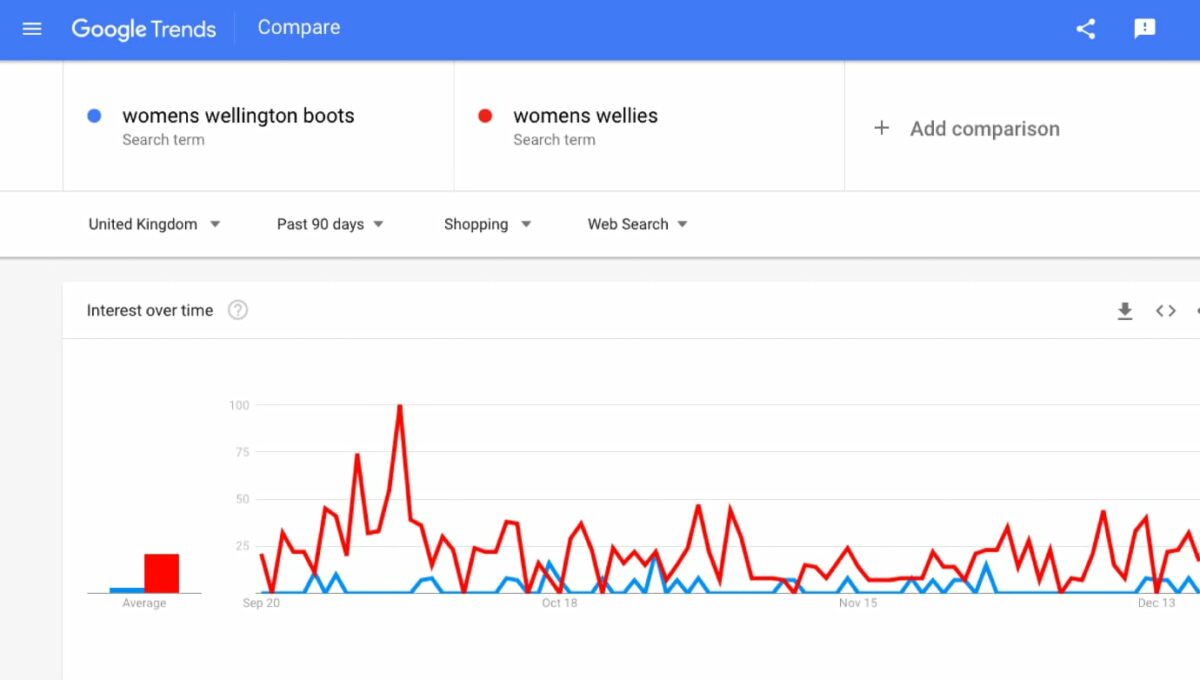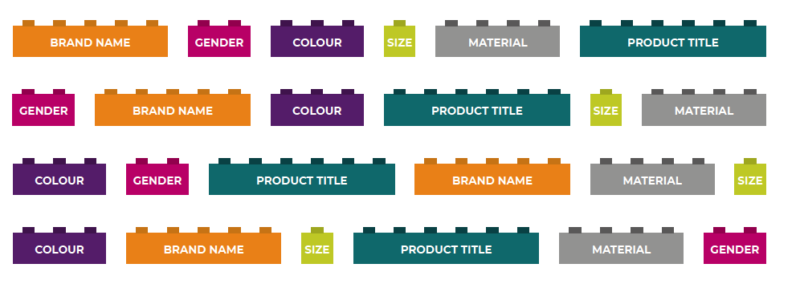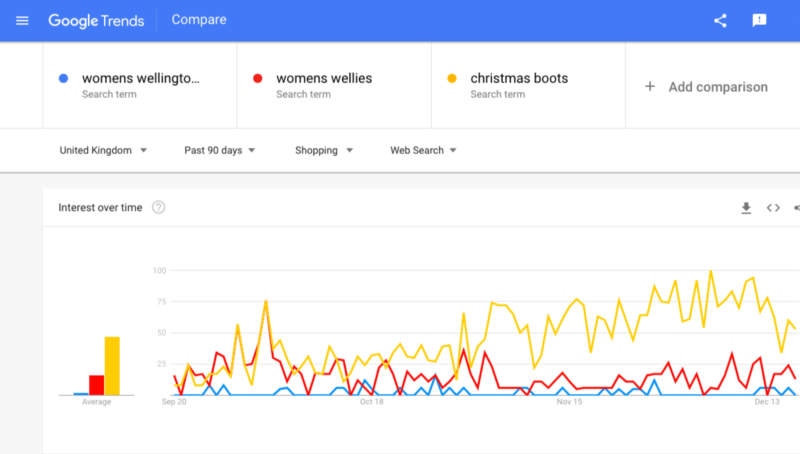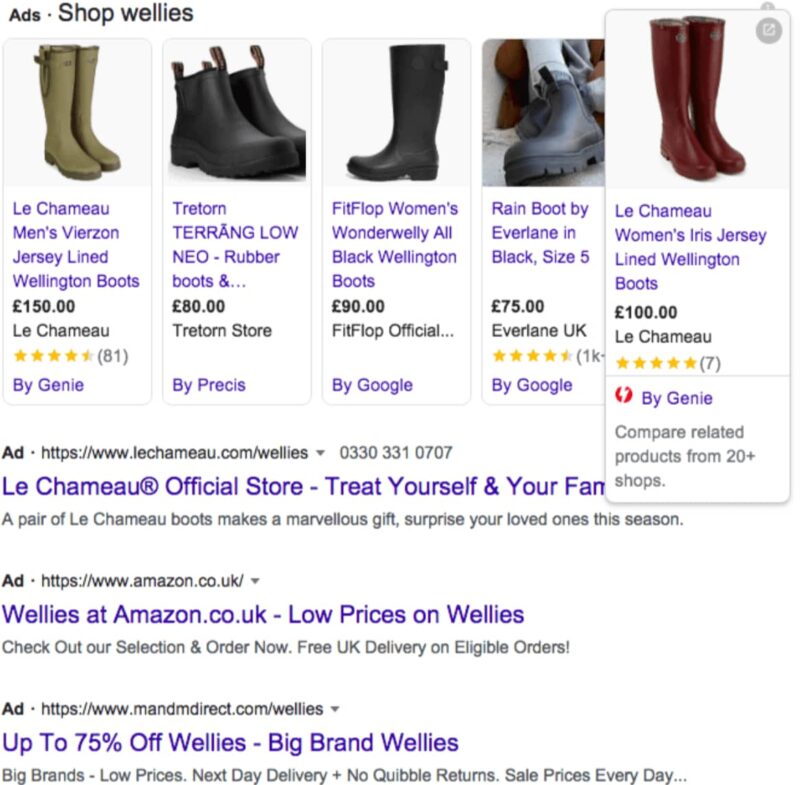Product feed optimisation delivers a huge boost to impressions, clicks and revenue. But 80% of retailers don't optimise their product data.
The average online retailer spends $2,000 per month on search engine optimisation (SEO) for their website. Larger stores are spending proportionally more - some exceeding $1m per year on SEO. However, many of the same retailers do not optimise their product data feeds.
- Why is optimising a product feed important?
- What do product feed management companies do?
- What is the benefit of full product feed optimisation?
- Product feed optimisation by location
- Google's feed optimisation tips
- Why are experiments so important in product feed optimisation?
- Continuous Content Experimentation leads to continuous performance
Why is optimising a product feed like SEOing your website?
According to the 2021 state of marketing report from Hubspot, 40% of marketing professionals list SEO as their primary approach to marketing, second only to social media in the study. 75% feel their SEO tactics are ‘extremely’ or ‘very effective’ at helping them achieve their marketing goals.
Most global retailers continuously SEO their content, their site architecture and even aspects of the hosting of their websites, such as the latency of their servers. But when it comes to optimising product feed data, it's a different story.
Most retailers and brands think about product data feed in terms of completeness, populating every field of their data feeds and making them attribute-rich. This is an important job which is critical to success. However, it's only the first stage in the optimisation process - what we call 'basic data feed hygiene'. What are the next steps?
A fully optimised feed should offer the best possible product visibility, at scale, across all of your products. So every product attribute should match the terms buyers are using to search for that product.
Most large online retailers employ a feed management platform, or service provider, to assist with that optimisation.
What do product feed management companies do?
Most product feeds coming out of e-commerce platforms are generic. The requirements of Google, Amazon, Facebook, Criteo and 1,000 other channels are highly specific. Each channel specifies a number of mandatory attributes that might not be present, in the correct form, in the original feed. Product data feed management companies provide templates and tools for inserting these attributes, potentially turning a single generic feed into a thousand channel-specific feeds. Once all the mandatory attributes are in place, these channel-specific feeds should pass audit on Google Shopping, Facebook, Amazon, etc. However, that still doesn't mean they are anywhere near optimised.
According to our own research (IntelligentReach.com*), up to 80% of the products that pass audit on Google Shopping never appear in an advert. They are effectively invisible, even though they contain all the mandatory attributes.
What is product data feed optimisation?
As with any SEO, product data optimisation improves the correlation between the things users are searching for and the content that is presented. This principally involves managing the titles, product types and images in product data feeds to increase relevance. This increases visibility (impressions) and lowers bid rates, effectively increasing the conversion rate and ROAS. By not optimising, you will pay more for fewer clicks that don’t convert as well as competitors’ products.
What is Google's data feed optimisation advice?
The key takeaways on Google’s product feed optimisation tips pages are:
• Make sure that all the information about your key products is present in the attributes of every feed. This goes beyond just backfilling the mandatory attributes, like gender, colour and size.
There are 45 different fields available in the Google PLA spec and you should use as many as possible to say everything about your key products that the specification allows. For example, brand is going to be important in most markets, and so is the material that products are made of, especially in fashion. Size and weight are important in other sectors. Try to populate all of the attributes that apply to each product. Google uses all of the attribute fields to decide if your products match a particular search.
Want to learn more? Check out our free download - The Ultimate Google Shopping Optimisation Guide.
• Edit your product titles to be as close as possible to the terms users are searching for.
Use tools like Google Ads Keyword Planner to identify commonly-used phrases. This also applies to product descriptions, which need to have as much detail as possible. Use your product data management platform to build up titles and descriptions from the individual attributes that you have been applying to products in your feed.
Product feed optimisation by location
Pay special attention to location and colloquialisms. In the UK, people are more likely to search ‘wellies’ than 'wellington boots'. It may go against your brand guidelines to use informal names for products, but if that’s what customers are using…
 Optimisation in action - the red line shows people searching for 'wellies', the blue line people searching for 'wellington boots'.
Optimisation in action - the red line shows people searching for 'wellies', the blue line people searching for 'wellington boots'.
Google’s feed optimisation tips
- Make sure that you provide complete product data and fix any critical issues for those products.
- Run experiments to identify optimisation techniques that are most effective for your products and target audience.
- Products with high-quality images are more likely to show for relevant search queries (avoid placeholder images or images that include promotional messages or logos). (Check out Google Shopping Images Tips.)
- Take advantage of opportunities to differentiate your ads with promotions, product ratings and customer reviews.
Why are experiments so important in product feed optimisation?
Experimentation is the third stage of product data optimisation and, arguably, the most important. You could literally double your impressions and clicks on Google Shopping by running regular experiments. Typically, an experiment takes the form of an A/B test where a change is made to product title, product type or the product images and the changes tested against the current set up.
The way the IR platform works is that it allows you to access any attribute in your master feed and use it like a building block to build up any of the other attribute in your feeds. In this way you can build up the Title, Description, Type (and any other attribute) to increase each product's match rate to a Google search.
Follow the process and the Title field in your ads may start looking something like this:
- For Fashion Ads: Brand + Gender + Product Type + Colour, Material, Size
- In Electronics: Brand + Attributes + Product Type + Model
- And for Hard Goods: Brand + Product Type + Size, Quantity, Weight
Below is an image showing four different ways a product title could be written using attributes. There are hundreds of other permutations. It's not possible to know which works best, for every product, so it's essential to A/B test product titles to properly optimise each feed..

What are the biggest factors in product visibility?
Whether it’s Christmas or Halloween, winter or spring, or big occasions like weddings and funerals; events alter the search behaviour of a significant proportion of users. And they can have a big impact on campaign performance. Where relevant, try to incorporate events into the titles and descriptions of the products in your feeds.

'Christmas boots' generates more searches on Google than women’s wellies during the Christmas season. Is this meaningful?
What should the Title of seasonal adverts look like? There is no way of answering this question without running experiments. For example, can we just add the event to the front of an already long title?
- Seasonal: Occasion + Brand + Gender + Product Type + Colour, Material, Size?
Will this result in a seasonal bump to a feed optimisation campaign? Is Christmas better left out of footwear campaigns or will some other title structure perform better? Notice this product title is now getting very long and, as only 75 characters of the product titles is displayed in some ad formats, we might end up with something like this:
Winter Le Chameau Women’s Iris Jersey-lined Well… where the user can’t even see what the product is.

Continuous experimentation leads to continuous growth
The only way to guarantee continuous feed optimisation is continuous experimentation. As with onsite SEO, there will always be work to be done on new products, new channels and new consumer behaviours. This is where product data management platforms become an essential tool.
- Look for a product data feed management system or a partner like Intelligent Reach that understands and supports the key markets of shopping ads, social media, marketplaces, dynamic advertising and onsite engagement.
- At a minimum, your feed partner should provide you with a template for each market and the tools to allow you to create high-performing variants of your feed for every channel.
- Your feed management partner should support experiments at the product level and be able to integrate their platform with your inventory management system and analytics stack.
Any idea you have for improving the performance of your product data is only a hypothesis until you have run an experiment to validate it. The Intelligent Reach Experiments module is designed to make testing easy. It takes just a few minutes to set up an experiment. When an experiment is successful it can be made permanent with just a single click. By running experiments across each product category, a brand or retailer can expect to see an uplift of around 80% in impressions (visibility) and over 100% in clicks., over time.
If you'd like to learn more about running successful experiments download our experiments playbook, or click here to request request an in-person demo.
Want to optimise your Google Shopping feeds?
Running experiments will nearly double your Google impressions and clicks
Download our Experiments Playbook








 River Island
River Island